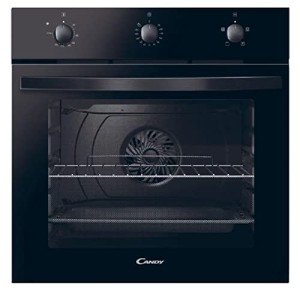single-electric-fan-oven4957
single-electric-fan-oven4957
10 Quick Tips About Single Oven
The Ultimate Guide to Single Ovens: Features, Benefits, and FAQs
When it pertains to modern kitchen devices, the single oven sticks out as a versatile and essential tool for any cooking enthusiast. In today’s hectic world, where convenience satisfies culinary craftsmanship, single ovens play a critical role in meal preparation. Comprehending the features, benefits, and types of single ovens can streamline the procedure of picking the ideal device for your kitchen. This detailed guide intends to supply a thorough appearance at single ovens, their specs, and answers to regularly asked questions.

What is a Single Oven?
A single oven is a kitchen appliance that includes one main cooking compartment. It is developed to perform various cooking functions such as baking, roasting, broiling, and more. Unlike double ovens, that include two separate cavities, single ovens make the most of space efficiency, making them suitable for smaller cooking areas or those who regularly prepare meals for a couple of individuals.
The Anatomy of a Single Oven
In order to appreciate the functionality of a single oven, comprehending its essential parts is necessary:
| Component | Description |
|---|---|
| Cooking Cavity | Main area where food is placed for cooking. |
| Control Panel | User interface for selecting cooking modes and adjusting temperature. |
| Heating Elements | Metal coils that create heat (typically found at the top and bottom). |
| Oven Door | Glass panel that permits presence into the cooking area. |
| Racks | Detachable racks that accommodate different dishes at various heights. |
Kinds Of Single Ovens
Single ovens can be found in various types based upon their heating techniques and styles. Here are some popular options:
-
Conventional Ovens: Utilize gas or electrical energy for a conventional cooking experience. They provide consistent heat for baking and roasting.
-
Convection Ovens: Equipped with a fan that distributes hot air, leading to quicker cooking times and even heat distribution.
-
Steam Ovens: Use steam to cook food, retaining wetness and nutrients. Suitable for healthier cooking approaches.
-
Wall Ovens & Hobs: Built into the wall to save area; they can boost kitchen looks while offering functionality.
-
Microwave Ovens: While not a traditional oven, modern-day microwave ovens can likewise bake and roast, using benefit for fast meal prep.
Functions to Look for in a Single Oven
When buying a single oven, consider the following features to ensure you select a device that suits your cooking requires:
-
Capacity: Ensure the oven’s size accommodates your typical cooking volume. Requirement capacities normally range from 4.5 to 6 cubic feet.
-
Temperature Range: Look for an oven that provides a wide temperature level range for various cooking methods.
-
Self-Cleaning Options: Self-cleaning modes bypass the need for extreme chemicals, making maintenance easier.
-
Smart Technology: Wi-Fi-enabled designs permit remote operation and tracking through smartphone applications.
-
Interior Lighting: Bright, incandescent or LED lighting assists monitor your food without opening the door.
Average Sizes and Capacities of Single Ovens
| Type | Typical Capacity (cubic ft) | Width (inches) | Height (inches) |
|---|---|---|---|
| Standard Conventional | 5.0 – 6.0 | 30 | 28 – 30 |
| Compact/Apartment Size | 3.0 – 4.0 | 24 | 28 – 30 |
| Wall Oven | 4.5 – 5.0 | 24 – 30 | 28 – 30 |
Advantages of Using a Single Oven
Investing in a single oven provides numerous advantages for both amateur cooks and skilled chefs alike:
-
Space Efficiency: A single oven occupies less area than a double oven, making it best for smaller kitchen areas.
-
Cost-Effective: Generally cheaper compared to double ovens, both in preliminary purchase and energy intake.
-
Adaptability: Capable of performing various cooking strategies, making it appropriate for a range of dishes.
-
Ease of Use: With a smaller cooking area, heat circulation tends to be more efficient, streamlining the cooking process.
-
Maintenance: Fewer components mean less intricacy when it concerns cleansing and repairs.
Frequently Asked Questions (FAQs)
What is the typical life-span of a single oven?
A single oven normally lasts in between 10 to 15 years, depending on usage, upkeep, and the quality of the home appliance.
How can a single oven save energy?
Single ovens need less power than double ovens, and numerous models are developed with energy performance in mind, lowering total energy usage.
Can a stove change a basic oven?
Yes, a convection oven can replace a basic oven as it provides similar cooking functions alongside faster cooking times.
Are single ovens appropriate for large households?
While single ovens can accommodate a decent quantity of food, bigger households may discover that a double oven or an extra single oven matches their needs more effectively.
How typically should I clean my single oven?
It is advised to clean your oven every 3 to six months, depending upon usage, to maintain health and performance, specifically with designs that include self-cleaning alternatives.
Is installation difficult for a single oven?
Many single ovens included uncomplicated setup directions. Nevertheless, speaking with an expert is recommended for safe and proper setup, especially for gas ovens.
The single oven stays a foundation appliance in kitchen areas around the globe. Its flexibility, performance, and space-saving design make it an attractive alternative for numerous homes. Whether you are an occasional cook or a cooking aficionado, picking the right single oven can considerably enhance your cooking experience. With the information shared in this guide, potential purchasers can make a notified choice, guaranteeing they pick an oven that best suits their cooking requirements and lifestyle.



